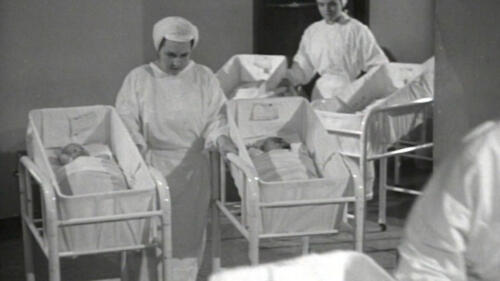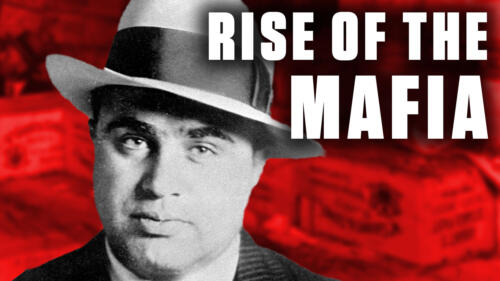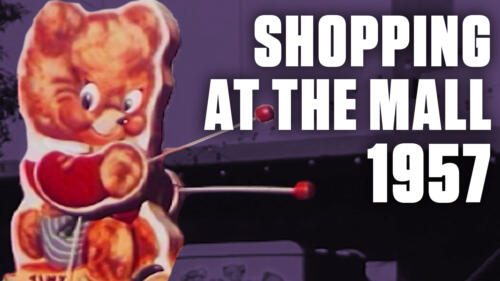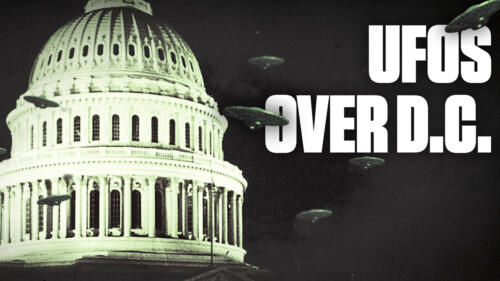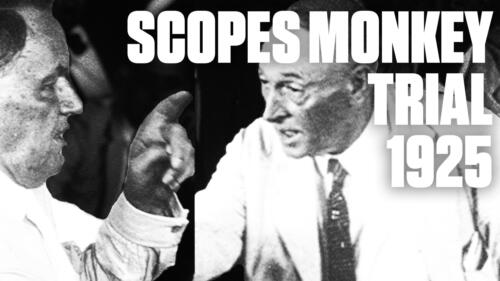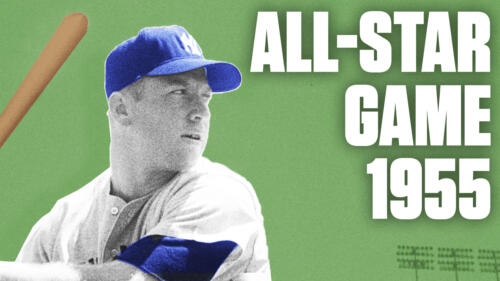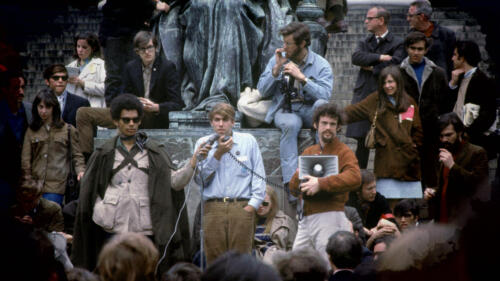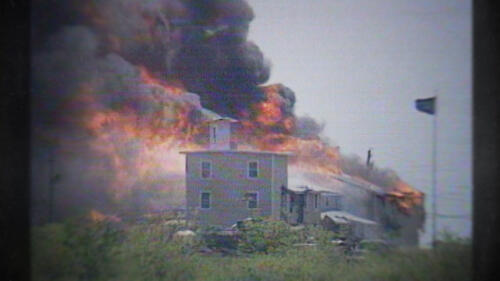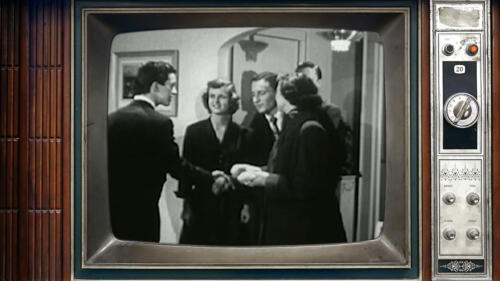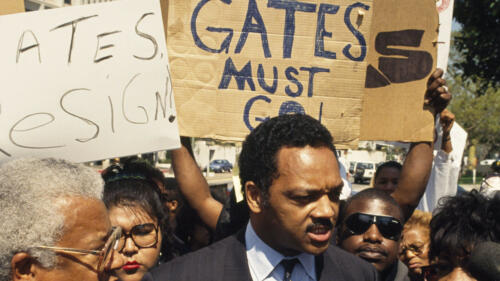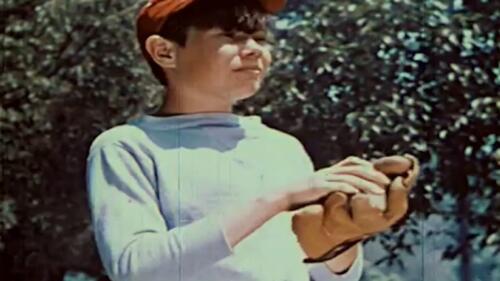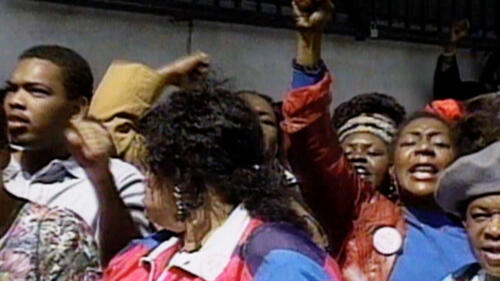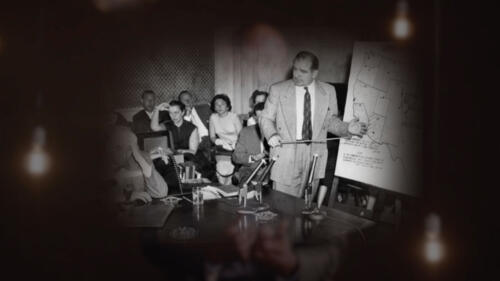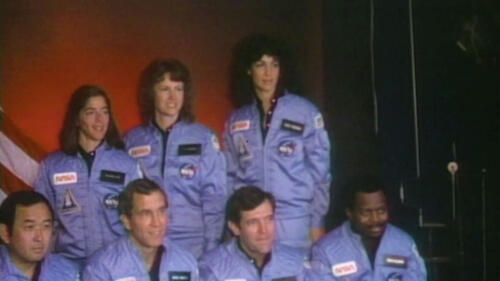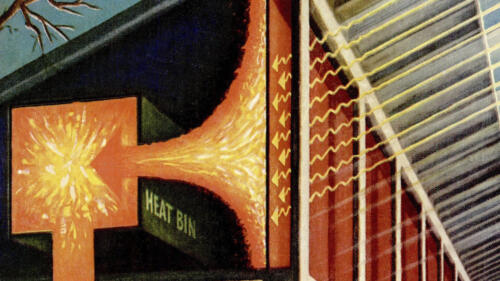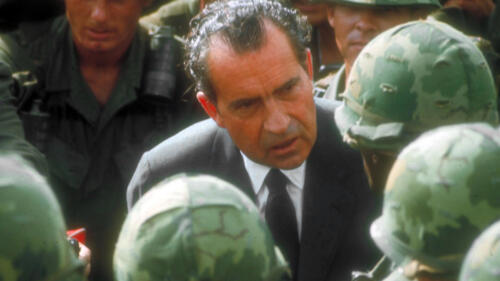20th Century
The 20th century, spanning 1901-2000, was marked by rapid technological advancements, two world wars, social revolutions, the Cold War, decolonization and groundbreaking achievements in science, space and civil rights.

Start Here

During the 1950s, the United States was the world’s strongest military power. Its economy was booming, and the fruits of this prosperity–new cars, suburban houses and other consumer goods–were available to more people than ever before. However, the 1950s also saw great conflict. The nascent civil rights movement and the crusade against communism at home and abroad exposed underlying divisions in American society.

The 1960s saw John F. Kennedy elected to the White House and gains in civil rights before America splintered amid cultural divisions and Vietnam War protests.

The 1970s brought social change in the battles for women's and gay rights, along with the launch of an environmental movement and a new conservative populism.

The 1980s were a decade of political conservatism, such as President Ronald Reagan’s Reaganomics, and of blockbuster movies, pop culture and fashion on MTV.
1930s
The 1930s
Learn more about the 1930s, a particularly tumultuous decade in world history that got its start with a bang - or, more accurately, a crash.
Explore related articles

The lava lamp began as an odd curiosity in a British pub.

As D&D enchanted imaginative youth, it also became a battleground for parents and pundits who feared its influence.

This 1960s chatbot was a precursor to AI. Its maker grew to fear it.

Hollywood would not be the same without 'Breathless.'

Hudson’s illness galvanized efforts to confront the AIDS crisis Hollywood had been ignoring.

L. Frank Baum’s original story never described her that way.

A famous pratfall helped 'The Dick Van Dyke Show' stumble its way into television history.

Originally part of the New Deal, it reshaped the American Dream.

Explore facts about the 1963 JFK assassination, the perpetrator, investigations...and conspiracy theories surrounding the event.

Fear of satanic cults and secret rituals swept the nation across music, media and even day care centers.

Ono was a barrier-breaking artist and musician long before meeting John Lennon.

Concealed from the public, Woodrow Wilson's medical crisis sparked constitutional questions that still reverberate.

The best horror movies hold up a mirror to our collective fears and taboos.

Quiet Maine towns became King’s stage for national fears.

Her televised tour brought the White House into American living rooms.

'The Man of a Thousand Faces' shocked viewers—and pioneered the art of movie makeup.

Nostalgic favorites like 'He-Man' and 'My Little Pony' began as product placement.

James Dean, Natalie Wood and Sal Mineo embodied youthful defiance on screen—and left behind some of Hollywood’s most tragic legacies.

When singing rats and bears became beloved mascots of ’80s and '90s childhoods.

After leaving Mattel, Ruth Handler put her expertise in plastics to a new use.

Ilse Koch was accused of committing atrocities at the Buchenwald concentration camp.

Mexico’s movie industry became a cultural powerhouse in the 1930s.

We have an actor to thank for the stereotypical voice, matey!

With the Aqua-Lung, the French oceanographer and filmmaker realized his dream of creating a system to swim and breathe freely underwater.

Flag burning has long tested the limits of freedom of speech.

The luxury liner’s collision with an iceberg set off a tragic chain of events.

Orwell’s allegory didn’t make it to the screen exactly as he wrote it.

Some of the most distinctive man-made structures in the National Park System are meant to look like man didn’t make them at all.

The scoop behind Carmel-by-the-Sea’s harsh law banning an ice cream shop—and the movie star mayor that brought it back.

The cola wars' strangest twist birthed the 'Pepski generation.'

Clever marketing gimmicks helped push the shopping cart into supermarkets.

The Deaf President Now! protests thrust disability rights into the national spotlight—and sparked ongoing questions.

How four squabbling heroes helped launch the Marvel universe and usher in a new era for comics.

Billy Joel’s music offers a soundtrack to America’s changing landscape.

Keep your hands inside the vehicle as we steer you through the rickety ups and terrifying downhill drops of this classic thrill ride.

The competition between the two bands led to some of the most forward-looking and influential music of all time.

“Racketeering” is an umbrella term that covers a wide variety of criminal activity. Here are five notable racketeering trials in American history.

The Red Sox aren’t the only team to use Neil Diamond's song for energizing crowds.

The pop sound of The Beach Boys blended Brian Wilson’s musical ambitions with the Californian dream.

Alcatraz Island, located in San Francisco Bay, is best known as the site of the notorious former federal prison, but its history extends far beyond that. Here, we answer six common questions about the national landmark.

The dramatic rooftop photo was long mistakenly misidentified.

Ali, ill with Parkinson's, went to Baghdad as a citizen diplomat.

These iconic structures showcase the sleek geometry and lavish detail that defined early 20th-century architecture.

The 1965 U.S. law requiring health warnings on cigarette packs played a key role in bringing about a new era of tobacco regulation.

Yacht rock, while defined more than two decades later, offered a break from the politically charged era of the 1960s and early '70s.

When it opened in 1926, the St. Francis Dam was an engineering marvel. Just two years later, it became an engineering catastrophe.

In 1952, news stations combined two new technologies—the TV and the computer—to forever transform how voters experience election night.

The 19 steel statues in the Korean War Memorial represent both a literal, and symbolic tribute to those who fought in 'America's Forgotten War.'

When scandalous news emerged in the final weeks of these presidential campaigns, election outcomes were at stake.

After enduring dark times, Americans were eager for a comeback.

In September 1975, President Gerald Ford escaped two attempts on his life—both by women and both in California.

The construction of the interstate highway system in the mid-1950s forever changed the road once known as "America's Main Street."

The parties swept the nation during the 1950s and 1960s—and were more than they seemed.

Presidential historian Doris Kearns Goodwin shares intimate—and harrowing—memories of the turmoil she and her husband witnessed that summer in Chicago.

The son of the famous president died in the 1999 accident, along with his wife, Carolyn Bessette-Kennedy, and her sister Lauren Bessette.

When a variant of Mad Cow Disease moved from cattle to humans in the mid-1990s, panic ensued and the British economy lost billions.

Wars, oil crises and a pandemic have all played a part in driving up inflation over the past century in the United States.

With youthful stints in the Kennedy and Johnson administrations, the presidential historian and her husband had unparalleled views into the pivotal people and events of that momentous decade.

Christa McAuliffe embraced the chance to be part of a space shuttle mission and, despite the Challenger disaster, left an inspiring legacy.

A look back at eight times when commercial airliners suffered unexplained catastrophes—and sometimes seemed to vanish into thin air.

While Monroe and DiMaggio's marriage was brief and tumultuous, the world became captivated with the ultimate pairing of sports and cinema royalty.

In February 1959, nine hikers were killed while trekking in the Ural Mountains. The Soviet government originally attributed a “compelling natural force” as the cause.

A 1975 work of fiction included enough real-life references to turn New York socialites against Truman Capote.

After centuries of devastating government policies, American Indians had someone in the White House willing to return tribal land, listen to grievances—and support their autonomy.

When wealthy Native people died during the Osage Reign of Terror, it was often their white spouses and court-appointed guardians who stood to profit most.

The self-styled 'King of the Osage Hills' masterminded a heinous spate of killings targeting oil-rich Indians.

Meir earned the title, in part, because of her steely leadership during the 1973 Yom Kippur War.

In the 1990s, hysteria over Ty Inc's $5 plush toys fed a wave of theft, fraud and market manipulation. Values soared—then plummeted.

Tanks—particularly the M1A1 Abrams—proved critical for U.S.-led coalition forces in the Persian Gulf War.

Ever since the US overthrew the Hawaiian monarchy in an illegal coup, Native islanders responded with protest, activism and expressions of cultural pride.

Prom wasn't always about the dress, the limo and the 'prom-posals.'

Social Security differed from other New Deal programs in that it wasn’t a short-term solution to the Great Depression. It was a long-term investment.

Hollywood blacklisted these screenwriters, producers and directors for refusing to testify before the House Un-American Activities Committee.

In 1997, 39 members of a religious sect were found dead by suicide inside a San Diego mansion. Why did they do it?

Between 1956 and 1958, Gibson became the first Black player to win the French Open, Wimbledon and the U.S. Nationals. But none of it came easy.

In 1965, the two prominent intellectuals faced off in Cambridge, England over whether the American dream is at the expense of African Americans. Baldwin won.

The young New York graffiti artist and Pop Art icon produced more than 150 works together. Critics in the '80s panned them. Now, some sell for millions.

A crew of hijackers, killers, loan sharks and thieves made off with $5.8 million in cash and jewels.

Communities across the U.S. required home deeds to include clauses that explicitly denied buyers based on race, ethnicity or religion.

A century-old law gives the federal government the right to intervene in certain labor disputes.

As chief justice of the U.S. Supreme Court, Warren led a court that decided multiple historic rulings on civil rights cases.

The Apollo program’s sixth human landing on the moon ended an epic chapter in space exploration.

ACT UP pressured the government, insurance companies and pharmaceutical companies for patient-centered care.

Once cutting-edge, these gadgets have since been overshadowed.

The 20-foot piece of the NASA space shuttle was found off the coast of Florida during the filming of the new HISTORY Channel series, 'The Bermuda Triangle: Into Cursed Waters.'

'Pong,' 'Space Invaders' and 'Pac-Man' helped spawn a juggernaut industry.

The U.S. energy crisis of the 1970s forced American leaders and researchers to come up with solutions in policymaking, technology and architecture.

Ford's 'Whip Inflation Now (WIN)' effort tried to tamp down inflation with a collective, can-do approach. It didn't work out.

When Korean American Chol Soo Lee was accused of murder in 1974, authorities misidentified him as Chinese American, and his case was marred by bias.

The six-time MLB All-Star wasn't just a pioneering athlete. His efforts launched a cascade of civil rights advances.

Mitchell, the wife of Richard Nixon's attorney general, alleged she was held hostage and drugged after she attempted to talk to the press.

It's the most spectacular unsolved crime in gangland history. Mobster Al Capone had an airtight alibi.

Mussolini, who coined the term fascism, crushed opposition with violence and projected an image of himself as a powerful, indispensable leader.

Declassified Cold War-era documents reveal how the Central Intelligence Agency used the epic novel <em>Dr. Zhivago</em> as a tool to undermine the Soviet Union.

These jurists had to break barriers to get to the bench—and didn't stop once they got there.

From Stalin's reign of terror to Gorbachev and glasnost, meet the eight leaders who presided over the USSR.

At its height, the USSR comprised of more than a dozen republics stretching across Europe and Asia. After the collapse, each forged a different path.

'Beer barons' like Pabst, Schlitz and Busch forged brewing dynasties with their pale, effervescent lager.

Power dressing. ’Eatertainment.’ Fad toys that sparked near-riots. Which trends did you participate in?

Theories ranged from negligence to sabotage to an 'act of God.'

These writers were part of the larger cultural movement centered in New York City’s Harlem neighborhood and offered complex portraits of Black life in America.

From 'I Have a Dream' to 'Beyond Vietnam,' revisit the words and messages of the legendary civil rights leader.


After mounting tensions between Catholic nationalists and Protestant loyalists, particularly in Belfast and Derry, violence broke out in the late 1960s.

Oswald's would-be victim on April 10, 1963, was an ultra-conservative firebrand named Edwin Walker.

When an Uruguayan rugby team crashed in the Andes on October 13, 1972, cannibalism helped some survive two months in harsh conditions.

New York's 'traveling rock show' made headlines on and off the field and beat the Boston Red Sox in the World Series.

In 1969, a group of Puerto Rican youth in East Harlem leveraged a garbage problem to demand reform.

The attack by a group of Islamic fundamentalists announced the growing threat of terrorism on US soil.

The miracle connection between the Dallas Cowboys' stars and Pro Football Hall of Famers stunned the Minnesota Vikings in a 1975 playoff game.

With a dazzling performance in Los Angeles, the West Virginia native helped lay the foundation for future U.S. stars.

The highly contagious disease dates to ancient times and spread easily in households and classrooms—until the development of a vaccine.

Drafted in 1971 by the New Orleans Saints, the 'other' Manning never had a winning season in the NFL.

Minutes before the 1976 MLB trade deadline, a flurry of sales went down—only to be blocked by Commissioner Bowie Kuhn.

Speculation fueled theories that a terrorist act had caused the crash that killed the 230 on board, but an investigation later concluded it was a tragic mechanical error.

The filibuster has blocked voting reform, anti-lynching bills and an amendment to abolish the Electoral College.

Bureau director J. Edgar Hoover had made his career fighting the perceived threat of communism.

In what came to be known as the 'long, hot summer,' US cities exploded—more than 150 times—into violent upheaval.

Martin Luther King Jr.’s Poor People’s Campaign took protest to a whole new level in 1968 with a tent city that operated as a town.

HIV and the syndrome it causes, AIDS, was first identified in the United States in 1981.

The groundbreaking gender equity law made a lasting impact by increasing the participation of girls and women in athletics.

From race-fixing and horse switches to performance-enhancing drugs, some will do whatever it takes to see their horse cross the finish line first.

During a time when fear and stigma around AIDS and LGBTQ identity were pervasive, Louganis kept his diagnosis secret until years later.

Protesters feigned mass death to shock and shame government, industry and the media into finally addressing the lethal disease.

The Greenwood district of Tulsa, Oklahoma had flourished as a neighborhood built by Black people, for Black people. In 1921 it was destroyed by a white mob. Get the facts on the attack and subsequent coverup.

After sprinters Tommie Smith and John Carlos made a defiant gesture from the awards podium at the Games, they faced repercussions—but also gained respect.

The Munich Massacre was an attack during the 1972 Summer Olympics in Munich, West Germany, by eight members of the Palestinian terrorist group Black September. The terrorists took nine members of the Israeli Olympic team hostage, after killing two of them. The remaining hostages were later killed during a botched rescue attempt.

The AIDS Memorial Quilt—with 1,920 individual panels, each inscribed with the names of people lost to AIDS—was displayed for the first time on October 11, 1987. It has grown ever since.

Historic images of Tulsa, Oklahoma's Greenwood district reveal how the 1921 mob attack devastated the nation's Black cultural and economic mecca.

Before the Tulsa Race Massacre, the city’s African American district thrived as a community of business leaders and visionaries.

Few historians dispute that planes flew low over the city's prosperous Black district during the 1921 attack. What's less clear: whether bullets were fired or incendiaries were dropped.

The 1982 strike led by immigrant women earned better workplace conditions and benefits for New York City’s garment workers.

Before carrying passengers, America’s most iconic airlines hauled the mail. It was one of the riskiest jobs around.

From disease cures to influential tech to workers' rights, Asian American innovators have made huge impacts on people's lives.

For some, the Great Depression began in the 1920s.

The assassination of “las Mariposas” (“the Butterflies”) fueled public outrage against one of the longest and most ruthless regimes in modern history.

It came. It thawed. It conquered. Along the way, the frozen meal in a box had multiple creators.

Representative Jordan's primetime remarks on the Constitution riveted the nation and underscored the grave role of serving as a check on the executive branch.

Stripped of wartime protections and branded as anti-American, labor unions languished in the Roaring Twenties.

And of course, all that grass inspired innovations in mowing.

Details around the 1969 police shooting of Hampton and other Black Panther members took decades to come to light.

No beer? No problem. Better refrigeration, together with innovations in making and selling frozen treats, helped steer people toward this 'refreshing and palatable food.'

A search for mass graves of the victims of the 1921 Tulsa Race Massacre highlights an event that some had tried to erase from history.

Their coordinated efforts to integrate a white officers' club set an example that wasn't lost on leaders of the burgeoning civil rights movement.

By the end of the 1920s, more than 40,000 different candy bars were being made in the U.S.
The Most Popular Baby Names In Every Decade
Do you ever feel like you have the most common name ever? From Emily to Micheal to Sarah, these names have caught many parents' eyes and defined decades. Check out the most popular baby names in every decade, in this episode of History By the Decade.

Israel banned 'Goldfinger' for two months after learning about Gert Fröbe’s former Nazi membership.

Executive Order 9981, one of Truman's most important achievements, became a major catalyst for the civil rights movement.

Despite a landslide loss, the Arizona Republican ignited his party's ultra-conservative wing for decades to come.

Facing a dwindling movement in Alabama, civil rights leaders recruited Black students to revive the march to end segregation.

After a Texas funeral home refused to let Felix Longoria's family use its chapel in 1949, Senator Lyndon Johnson stepped in.

After Fidel Castro loosened emigration policies, some 125,000 Cubans landed on U.S. shores over a span of five months.

More than a quarter of the nation was inoculated in 1976 for a pandemic that never materialized.

The 1980s battle over safety belt laws reflected widespread ambivalence over the role and value of government regulation.

When JFK faced a tight race for the White House in 1960, he turned to a group of Americans who had long been overlooked by political campaigns.

The 1955 announcement of a new vaccine was met by jubilation. But doubts and problems soon followed.

With their presidential ticket, Walter Mondale and Geraldine Ferraro made history in 1984. But that didn't help them win.

When four Black students refused to move from a segregated Woolworth's lunch counter in 1960, nation-wide student activism gained momentum.

The 1990 protest demonstrated the barriers that inaccessible buildings create for people with disabilities.

John Lewis was arrested 40 times during the civil rights movement.

It took just four years to get the mumps vaccine ready for market—but its development leaned heavily on groundwork that had been established during World War II.

When a rumor catapulted into an explosion of frustration and rage, a fabled Black neighborhood in Manhattan turned into a battleground.

In one of the worst riots in US history, some 43 people lost their lives and thousands more were injured or arrested.

Health officials first became aware of AIDS in the summer of 1981, but U.S. leaders remained largely silent for four years.

In the 1990s, eight adventurers spent two years separated from the rest of the world inside a futuristic greenhouse meant to mimic a spaceship—on Earth.

In the mid-1980s American farmers faced a dire future. Willie Nelson and other artists decided to help using what they knew best—music.

Two autoworkers who reportedly mistook Chin to be Japanese received no jail time for the killing.

Prohibition proved no match for the deadly virus—at least for a while.

From post-war recessions to the energy crisis to the dot-com and housing bubbles, some slumps have proven more lasting—and punishing—than others.

It was supposed to be the third-ever moon landing. It turned into a rescue mission.

Since little was understood about the virus that left some paralyzed and others dead, fear filled the vacuum.

With a focus on racial pride and self-determination, leaders of the Black Power movement argued that civil rights activism did not go far enough.

From jazz and blues to poetry and prose to dance and theater, the Harlem Renaissance of the early 20th century was electric with creative expression by African American artists.

The illustrated book was first printed in 1957 and encouraged young people, including future Congressman John Lewis, to stage nonviolent protests.

Long after the Mississippi justice system gave up on the murder prosecution, Myrlie Evers kept the case alive.

The 15th Amendment was supposed to guarantee Black men the right to vote, but exercising that right became another challenge.

Aldrin saw a broken-off circuit breaker switch lying on the floor of the lunar module and "gulped hard."

A Senate impeachment trial is modeled on the criminal trial process—except the Supreme Court chief justice presides and senators act as jurors.

The queen and the royal family faced significant milestones and challenges during the two decades.

"I am not the Catholic candidate for president,” JFK declared in 1960. “I am the Democratic Party's candidate for president, who happens also to be a Catholic."

The Kennedy patriarch amassed great wealth partly by selling alcohol, but he also made savvy deals and sales that became extremely lucrative.

The trial raised questions about the First Amendment and exposed a culture clash in America.

Greenwood Avenue featured luxury shops, restaurants, movie theaters, a library, pool halls and nightclubs.

Thomas J. Midgley is now considered one of history's most dangerous inventors.

The Woodstock music festival may not have been a smoothly run event, but it featured electric moments—musical and otherwise—that made it unforgettable.

The former Western movie set provided shelter—and isolation—as Charles Manson and his followers plotted the 1969 murders of actress Sharon Tate and others.

When Neil Armstrong stepped down a ladder and onto the moon on July 20, 1969, the nation achieved an audacious vision. But there were surprising moments along the way and not everything went as expected.

Yes, there was rocket science. But there were also extraordinary amounts of low-tech weaving, stitching and caulking.

The 1969 mission was so ambitious it took three presidents to see it through.

NASA created simulations that mimicked everything from the moon’s gravity to its landscape.

Until 1989, Russians claimed they were not trying to reach the Moon first and that the U.S. was in “a one-nation race."

In 1969, NASA was spending millions on the Apollo space program. Some argued that money could be better spent.

After a 1954 ruling declared that segregated schools were unconstitutional, a decades-long effort to integrate them through busing was often met with violent protests.

The astronaut crew had to troubleshoot a series of problems throughout the historic 1969 flight.

In 1929, Section 1325 criminalized undocumented immigration for the first time. Its aim was to decrease Mexican immigration.

Neil Armstrong’s celebrated “one small step” was far from the most dangerous maneuver in the effort to send three men to the moon and return them home a week later. See a timeline of the entire mission.

In the summer of 1978, the S.S. America sent passengers over the edge.

Woodstock 1969 was plagued by stormy weather and technical problems, but it produced a string of musical performances that resonate a half-century later.

Paul McCartney said the song was about a playground slide, but Manson claimed the music incited a race war and murder.

Among seven Apollo moon landing missions, only one did not land men on the moon.

Was the unpopularity of New Coke actually a blessing in disguise for Coca-Cola?

Claims the Apollo 11 mission was staged began soon after astronauts first set foot on the moon in 1969.

During Prohibition, gay nightlife and culture reached new heights—at least temporarily.

Fifty years later, Police Commissioner James P. O’Neill admits the police department enforced discriminatory laws.

Pink triangles were originally used in concentration camps to identify gay prisoners.

Rodney Alcala won a 1978 episode of 'The Dating Game' in the middle of a murder spree.

The mission that paved the way for the Apollo 11 moon landing came close to ending in disaster.


Was Dancer’s Image disqualified because his owner supported the civil rights movement?

Chavez and Itliong organized a boycott of grapes in the U.S. as a way to signal support for workers' rights.

The 74-day Falklands War became Prime Minister Thatcher's "moment" that led to swift British victory—and also helped save her political skin.

From a 25-year-old with his finger on the wrong button to a grizzled Communist Party apparatchik who thought evacuation was for sissies, here are the protagonists at the center of the tragedy.

More than fifty years later, people are still trying to match the bizarre accident that was Woodstock ‘69.

The Chernobyl nuclear disaster was made worse when Soviet authorities initially denied the event and then acted slowly to contain it.

To see the epic performances at Woodstock, attendees endured crowds, rain, minimal food and water—and lots of mud.

It took a scandal—and a grand jury investigation—to usher in a more honest era of TV game shows.

Panic set in after the partial nuclear meltdown as the public tried to decide which story to trust—and whether to evacuate.

Carter's executive order left many people furious, while others saw it as a bold show of compassion.

The Soviet masses did not respond well to 'prozodezhda,' a 1920s experiment that sought to revolutionize dress.

Bild-Lilli was risqué—and just what Barbie inventor Ruth Handler was looking for.

The chief architect of McCarthyism prosecuted the Rosenbergs, purged suspected communists and LGBT government workers and was portrayed in 'Angels in America.'

As Americans dreamed of amassing fabulous fortunes, many became vulnerable to cons.

Designers fashioned a mid-century world visually inspired by Dr. Strangelove, Edward Hopper paintings and more.

Its title—'The Negro'—seemed innocuous enough. But the revolutionary civil rights leader intended it to invoke a much harsher meaning.

Prisoner exchanges were critical to a ceasefire in the Korean War—but a peace treaty was never signed.

The humiliating abuse of African dignitaries under Jim Crow laws helped pressure the government to finally throw its weight behind civil rights legislation.

President Nixon's 'Honor America Day' featured the Rev. Billy Graham and Bob Hope in an Independence Day event that critics saw as a pro-Vietnam War rally.

World War I’s legacy of debt, protectionism and crippling reparations set the stage for a global economic disaster.
How Prohibition Created the Mafia
Starting in January 1920, the United States became a dry country. Prohibition banned the manufacture and sale of alcohol in an attempt to civilize unruly Americans (and some other reasons). The experiment had many unintended consequences, but most dangerously, it fostered the rise of organized crime and the American Mafia.

President Franklin D. Roosevelt feared losing Southern support for his New Deal legislation.

The 13-year ban on beer production during Prohibition forced America’s biggest brewers to find creative ways to remain in business.

The shocking disaster delayed the speech for one week.

“Outside of my immediate family, his was the greatest friendship I have ever known or experienced,” photographer Flip Schulke said of Martin Luther King Jr.

There were multiple memorials and tributes to the fallen civil rights leader.

During the 13 dry years of Prohibition, sneaky Americans went to great lengths to conceal their alcohol consumption from law enforcement.

100 years ago, the KKK began terrorizing Catholic immigrants in the name of Prohibition.

The civil rights leader was attacked in 1958 by Izola Ware Curry, a decade before his murder.

Kingpins like Al Capone were able to rake in up to $100 million each year thanks to the overwhelming business opportunity of illegal booze.

Aeronautics expert. Historian. Scientist. Economist. Henry Woodhouse passed himself off as all these and more. In reality, he was a con artist—and a convicted killer.

The strike started when one driver, mad as hell about the OPEC oil crisis, turned off his engine and got on his CB radio.

During the Roaring Twenties, Prohibition seemed here to stay. Then the economy collapsed, and the “noble experiment” crumbled along with it.

Born in the ashes of World War II, the currency used by 19 European countries went into effect on January 1, 1999.

Hindsight is 20/20, but the stock market threw signals back in the summer of 1929 that trouble lay ahead.

Law enforcement knew who killed Harry and Harriette Moore on Christmas in 1951. So why wasn’t justice served?

Newt Gingrich was offended that Clinton hadn't talked to him on Air Force One.

Carry Nation had a bad history with alcohol—and she went to extremes to try and get it banned.

Passage of the ERA seemed like a sure thing. So why did it fail to become law?

Chilling audiotapes tell the story of the Jonestown massacre.

From new money to consumer culture to lavish parties, F. Scott Fitzgerald's 1925 novel depicted the heyday of the 1920s—and foreshadowed the doom that would follow.

Did Stan Lee support the civil rights movement through his comic books for Marvel?

The over 900 deaths in Guyana under cult leader Jim Jones were more mass murder than suicide.

Hart dropped out of the 1988 presidential race after journalists reported on one of his many affairs.

Test pilots, astronauts in training and full astronauts all perished in the effort to lead the space race.

There were arguments over food, helmets and spacesuits that required 30 minutes for astronauts to use the bathroom.


A strategy to give congressional campaigns a unified, national message under the "Contract With America" led to a Republican sweep.

In 1912, the Titanic was glorified as the largest and most luxurious passenger ship in history. See it before and after its tragic sinking.

The bungled crime featured an affair, a murder and a planned insurance scam.

President Reagan took three tries to get a Supreme Court nomination approved—and the outcome would have far-reaching consequences for the Court and the country.

Young women with short hairstyles, cigarettes dangling from their painted lips, dancing to a live jazz band, explored new-found freedoms.

The hippie counterculture reached its height during the escalation of U.S. involvement in Vietnam, and subsided as the conflict drew to a close.

Having grown up in the segregated South, Ashe became the first Black man to win the U.S. Open in 1968. The victory helped him find his voice on a wide array of social-justice issues.

If not for the former White House counsel, Nixon might never have resigned.

Nixon wanted to send a message to “the Angela Davis crowd.”

The protestors helped themselves to the editor's cigars and would not budge from his office.

In all of their different incarnations, the Men in Black usually have one main purpose: to muzzle witnesses of strange, paranormal phenomena.

On July 20, 1969, two American astronauts landed on the moon and became the first humans to walk on the lunar surface. The event marked the culmination of a nearly decade-long intense push to meet a challenge posed by President John F. Kennedy.

After President Nixon refused to release his secret tapes, Congress ruled that they were the government’s property, not his.

The Yippies found their voice by organizing an absurdist counter-convention—including nominating a pig for president.

The mystery van had a few key details that were fundamental in tracking its origin.

NASA worried the Christian ceremony might draw unwanted scrutiny.

Some 3,000 hours of secret tapes from President Nixon have been released, but only a small percentage has been published. Here are some moments.

Known then as the Trial of the Century, the famous court case was the ultimate showdown between evolution and the Church.
On April 2, 1993, the stock price of Phillip Morris dropped a whopping 26 percent, the largest price drop of any company―until Facebook's July 2018 tumble.

In the early 1980s, the U.S. government distributed some 300 million pounds of pungent-smelling processed cheese that had been produced with federal funds.

After Michael Donald’s brutal murder, his mother, Beulah Mae, fought for justice beyond the conviction of his killers.
Flashback: 1955 MLB All-Star Game in HD
"What do Mickey Mantle, Hank Aaron, Ted Williams, Stan Musial, Willie Mays, and Yogi Berra all have in common They're all baseball players! And they all played together on the same field at the 1955 MLB All-Star Game at Milwaukee County Stadium. Watch the recap of this historic game from rare, HD footage."

A nighttime boat chase that ended in gunfire and the deaths of three men triggered outrage that would lead to a new amendment to the U.S. Constitution.

Remember when a little-known web blog helped blow up a presidency? And a music-streaming service called Napster wreaked havoc in the recording industry?

Before meeting his young wife, 51-year-old New York real estate titan Edward Browning had taken out newspaper ads saying he wanted to adopt a 14-year-old girl.

In the aftermath of his brother’s tragic death, RFK became a fearless champion for the underrepresented.

Bayard Rustin was an indispensable force behind the civil rights movement...and openly gay.

Beyond the war on terror, Bush took significant action to combat AIDS, particularly in Africa.

Some people even thought both parties should nominate him in the 1920 presidential race.

Centuries of prejudice and discrimination against blacks fueled the civil rights crusade, but World War II and its aftermath were arguably the main catalysts.

Timothy McVeigh developed his suspicion of government authority at a young age—but two pivotal events pushed him over the edge.

The Branch Davidians fell from public view after the disastrous raid of their compound, but they maintained a presence in Waco, Texas—and around the world.

The Supreme Court ruling was met with inertia and, in many states, active resistance.

With Chernobyl's nuclear radiation raining down, Communist party officials dithered, delayed and hid the truth. Then they gave residents of nearby Prypiat 50 minutes to evacuate.

Former FBI deputy director William Mark Felt broke his 30-year silence and confirmed in 2005 that he was “Deep Throat,” the anonymous government source who helped take down President Nixon in the Watergate scandal.

The Freedom of Information Act, or FOIA, was signed into law in 1966, giving the public the right to access records from any federal executive branch agency.

A look back at America's long-simmering conflict with Iran.

Bill Clinton's 1992 presidential campaign placed welfare reform at its center, claiming that his proposal would “end welfare as we have come to know it.”

The Great Depression, the worst economic downturn in modern history, profoundly affected the daily life of American families in ways large and small.

When a truck bomb detonated outside a federal building in Oklahoma City on April 19, 1995, it was the biggest terror attack in U.S. history—and launched the F.B.I.'s largest-ever manhunt.

What really happened during the 1993 siege between the government and mysterious cult leader David Koresh may never be known. But intriguing clues remain.

The stock market crash of 1929 was the worst economic event in world history. What exactly caused the stock market crash, and could it have been prevented?

The Orangeburg Massacre, one of the most violent yet least recognized episodes of the civil rights period, unfolded at South Carolina State University in 1968.
Why Did Columbia University Students Protest in 1968?
Learn how the Vietnam War and the construction of a gym on campus prompted Columbia University student groups to protest the administration in 1968. See how their numbers swelled into the thousands and inspired student protests all over the country.

After the assassination, King's family did not trust the findings of the FBI, which had harassed the civil rights leader while he was alive.

Riots broke out in over 100 American cities after King’s murder.

Rev. Jackson, who was part of King’s inner circle in 1968—and witnessed his assassination—weighs in on that shocking moment, its turbulent aftermath and carrying forth the dream.

Hollywood’s Humble Origins In 1853, a small adobe hut was all that existed where Hollywood stands today. But over the next two decades, the area became a thriving agricultural community called Cahuenga Valley. When politician and real estate developer H...

Back in the 1960s, even the NRA supported gun control to disarm the group.
What Led to the Oklahoma City Bombing?
Learn what motivated white right-wing terrorists Timothy McVeigh and Terry Nichols to commit the Oklahoma City Bombing, which killed 168 people on April 19, 1995. Discover the federal and local clean up efforts and the fate of McVeigh and Nichols.

The 1968 Democratic Convention in Chicago, Illinois, was marked by violent protests and party upheaval as Hubert Humphrey clinched the presidential nomination.

Despite what adults of the era wanted, their kids had very different ideas about what it meant to have fun.

'Freedom Day' didn’t succeed, but it made de facto school segregation the talk of Chicago.

The Exxon Valdez oil spill dumped 11 million gallons of crude oil into Alaska's Prince William Sound in 1989, damaging the environment and killing wildlife.

During the Tulsa Race Massacre, a white mob attacked residents, homes and businesses in the predominantly Black Greenwood neighborhood of Tulsa, Oklahoma over 18 hours on May 31-June 1, 1921. The event remains one of the worst incidents of racial violence in U.S. history.

Now an icon of the Civil Rights Movement, Nash was arrested dozens of times for non-violent protests—including while six months pregnant.

You have to be 21 to buy a handgun at a store, but only 18 to get one at a gun show.

This Isn’t the First Time Conspiracy Theorists Have Accused Student Activists of Being ‘Paid Actors’
Students were targeted during the Civil Rights movement, too.

As simmering political and cultural resentments exploded in 1968, nearly every week produced news of another earth-shattering event.

From the unlikely host city to the first 'Miracle on Ice,' these games were filled with incredible upsets and improbable firsts.

When Tommie Smith and John Carlos raised their fists in protest at the 1968 Summer Games, Australian runner Peter Norman stood by them. It lost him his career.

Marvel's groundbreaking superhero emerged in the 1960s—during the height of the civil rights movement.

Al Capone was widely believed to have ordered the hit.

The Panthers’ popular breakfast programs put pressure on political leaders to feed children before school.

When Michael Isikoff broke the story of Ken Starr's investigation into the Lewinsky affair 20 years ago, he had no idea how much it would change the presidency and the country.

Though their stories are sometimes overlooked, these women were instrumental in the fight for equal rights for African Americans.

Caroll Spinney—the puppeteer in the yellow suit—was in talks to go to space.

Seven lives were lost as communications failed in the face of public pressure to proceed with the launch despite dangerously cold conditions.

Ruby Ridge was the location of a violent 11-day standoff between an Idaho family and federal agents in 1992 that sparked the modern American militia movement.

Meet Izzy and Moe, the Prohibition era’s canniest crimebusters.

More than fifty years later, one of the only reporters allowed inside recalls the iconic concert.

In later speeches, his language became more assertive, as he urged those with privilege to reject the comfort of the status quo—and jump into the fray.

A turbulent 1968 included the Tet Offensive of the Vietnam War, the assassinations of MLK and Robert F. Kennedy and the historic Apollo 8 lunar mission.

Sergeant Reckless was the only animal ever awarded an official rank in the Marine Corps.

The Monica Lewinsky scandal in the late 1990s involved President Bill Clinton and Monica Lewinsky, a White House intern in her early 20s. In 1995, the two began a sexual relationship that continued sporadically until 1997. The impeachment of Bill Clinton was initiated in December 1998 by the House of Representatives for charges of lying under oath and obstructing justice.

The Waco Siege was a 51-day standoff between federal agents and members of a millennial Christian sect called the Branch Davidians at a Texas compound in 1993.

Jones helped convict two men nearly 40 years after their crimes.

Nearly 500 patrons perished in the 1942 inferno at Boston’s Cocoanut Grove.

It wasn’t gasoline—but moonshine—that fueled the growth of stock car racing in Appalachia and led to the rise of NASCAR.

The Great Society was an expansive set of programs and legislation launched by President Lyndon B. Johnson to address issues of poverty, crime and inequality.

The Scopes Trial, or the Scopes Monkey Trial, was a 1925 trial in which Clarence Darrow and William Jennings Bryan debated the teaching of evolution in schools.

'Petting parties' added some steam to Jazz Age soirees.

The Watts Rebellion was a series of riots that stemmed from an August 1965 arrest in a mostly Black Los Angeles neighborhood before subsiding after six days.

The 1967 Detroit Riots were among the most violent and destructive riots in U.S. history. By the time the bloodshed, burning and looting ended after five days, 43 people were dead, 342 injured, nearly 1,400 buildings had been burned and some 7,000 National Guard and U.S. Army troops had been called into service.

The Teapot Dome Scandal of the 1920s shocked Americans by revealing an unprecedented level of greed and corruption within the federal government. In the end, the scandal would empower the Senate to conduct rigorous investigations into government corruption.

It didn't end when Central High School was integrated.

Bumper-to-bumper roadblocks that left drivers stranded for days.

Eight years to the day after Till’s death, some 250,000 people gathered in the nation’s capital for the iconic March on Washington for Jobs and Freedom.

The Iran-Contra Affair was a deal made by the Ronald Reagan administration which sent arms to Iran to secure the release of hostages and fund Nicaraguan rebels.

It was police, not politicians, who misled the public in 1975.

Nearly 50 years before the March on Washington, African Americans took to the streets of New York to protest racial inequality.

In the 1950s, the beach wasn’t open to everyone.

HIV and AIDS began spreading among humans in the 1920s and became a public health crisis by the 1980s, before the first effective treatments emerged.

June of 2017 marked the 10-year anniversary of the release of Apple’s iPhone, a device that not only revolutionized the way the world communicates, but also helped catapult Apple into a global economic and technological powerhouse. At a time when an estimated 700 million users around the world currently enjoy the fruits of Steve Jobs’ […]

Just Say No was the name and catchphrase of a youth antidrug campaign led by first lady Nancy Reagan as part of the U.S. government's war on drugs in the 1980s.

420 doesn’t begin with the police, but rather in the 1970s with a group of students in California.

The Los Angeles riots erupted across the southern California city in spring 1992 after four LAPD officers were acquitted of assaulting motorist Rodney King.

The man who gave the world "Generation X" looks back at the oft-maligned 1990s.

From the Hutchinson Papers to the Pentagon Papers to WikiLeaks, look back at some of the most significant leaks in history and their impact.

The Foreign Intelligence Surveillance Act was designed to prevent secret surveillance by the president and others.

The alleged motive behind Emmett Till's 1955 lynching may have been based on a lie, but the brutal crime inspired a new wave of activism.

Consider how history might have been different had Martin Luther King Jr. not been assassinated at the age of 39.

Take a look back at Hands Across America, the charity event in which 5 million people formed a human chain across the United States.

From the Dust Bowl to the BP oil spill, explore some of the most notorious environmental disasters of the last century.


The space shuttle Challenger blew apart some 73 seconds after liftoff from Cape Canaveral, Florida, on January 28, 1986, killing all seven astronauts on board.

With his trademark white suit and goatee, the Kentucky Fried Chicken founder is recognized the world over. But who was he really—and was he actually a colonel?

Look back at the problem-plagued unveiling that some park employees dubbed “Black Sunday.”

One hundred years ago, a misdemeanor trial in the town of Dayton, Tennessee captured the world's attention as a high school teacher stood accused of violating a state law that prohibited teaching evolution.

The future fast-food giant started out as anything but swift, serving up slow-cooked barbecue. How did it become the behemoth it is today?

Learn about the notorious Chicago gangster—from the crime he did time for at Alcatraz to his feelings about the nickname 'Scarface.'

Explore 10 surprising facts about the glamorous and tragic life of one of the 20th century’s most celebrated writers.

Thieves stole 13 masterpieces worth $500 million from Boston's Isabella Stewart Gardner Museum in 1990. The case remains unsolved.

The assault on civil rights marchers in Selma, Alabama helped lead to the Voting Rights Act.

Get the facts on the civil rights activist and Black nationalist.

Ninety-five years after its inception, learn 10 fascinating facts about America’s nearly 14-year “noble experiment” in alcohol prohibition.

In 1919, Chicago White Sox players allegedly threw the World Series. It remains one of professional baseball’s most notorious scandals.

In 1974, Richard Nixon became the first president to resign from office. Here's how his final hours in the White House unfolded.

President Nixon prepared a chilling speech in case disaster struck the moon landing.

Take a look back at the landmark school desegregation ruling.

California's In-N-Out Burger brought drive-thru dining to the mainstream—and Americans haven't looked back since.

Take a look back at how the Fab Four conquered American pop culture.

The arrival of the National Zoo’s first giant pandas in 1972 marked a new chapter in U.S.-China relations.

More U.S. civilians died in the bombing of Pan Am Flight 103 over Lockerbie, Scotland than in any other terrorist attack except 9/11.

Look back at America’s surprising reaction to the end of Prohibition.

An attack by President Nixon on his own Justice Department came with grave consequences.

In an excerpt from his new book, author Steven M. Gillon details the final hours of Lee Harvey Oswald's life.

Find out more about this much-maligned investigation into the murder of America’s 35th president.

President John F. Kennedy was just one of a handful of people hit in downtown Dallas on November 22, 1963.

Orson Welles' 1938 program is the most famous—and dramatic—broadcast in radio history.

On September 15, 1963, a bomb exploded at a predominantly Black church in Birmingham, Alabama, killing four young girls and setting off nationwide soul-searching.

How a six-day hostage drama inside a Swedish bank christened the psychological phenomenon known as "Stockholm Syndrome."

Explore some interesting facts you may not know about the 38th U.S. president, Gerald R. Ford.

Explore the life and legacy of the civil rights pioneer.

King penned of the civil rights movement's seminal texts while in solitary confinement, initially on the margins of a newspaper.

Find out what happened to the key players in the siege of the Branch Davidian cult compound on February 28, 1993.

Explore 10 surprising facts about the civil rights activist.

What do you get when you send Americans underground to consume alcohol? Finger foods.

Find out what happened to some of the key players in the historical scandal that brought down a U.S. president.

Explore nine surprising facts about the massive German airship and its fiery demise.

Find out about Freddie Mercury, the inspiration for today's Google Doodle, and other famous people who helped put a face on the HIV and AIDS crisis.

Caroline Kennedy, the eldest child of U.S. President John F. Kennedy, spent her early years in the White House before becoming a lawyer, author and ambassador.

An oil embargo imposed by members of the Organization of Arab Petroleum Exporting Countries (OAPEC) led to fuel shortages and sky-high prices throughout much of the 1970s.

During the 1950s, the United States was the world’s strongest military power. Its economy was booming, and the fruits of this prosperity–new cars, suburban houses and other consumer goods–were available to more people than ever before. However, the 1950s also saw great conflict. The nascent civil rights movement and the crusade against communism at home and abroad exposed underlying divisions in American society.

At the 1950 World Cup, the United States pulled off one of the greatest upsets in the history of sports, beating all odds to defeat the polished English team.

Amelia Earhart (1897-1939) vanished into thin air sometime in 1939, spawning a number of theories about how and where the famed aviator died.

F. Scott Fitzgerald (1896-1940) was an American writer, whose books helped defined the Jazz Age. He is best known for his novel "The Great Gatsby" (1925), considered a masterpiece. He was married to socialite Zelda Fitzgerald (1900-1948).

Watch a brief video on the hugely influential Baby Boomers — the generation of Americans born during the post-World War II period between 1946 and 1964.

Richard J. Daley was a political boss who served as mayor of Chicago and chair of the Cook County Democratic Party Central Committee for more than two decades.

The Roaring Twenties were a Jazz Age burst of prosperity and freedom for flappers and others during the Prohibition era, until the economy crashed in 1929.

Vietnam War protests began among antiwar activists and students, then gained prominence in 1965 when the U.S. military began bombing North Vietnam heavily.

The NASA space shuttle Challenger exploded just 73 seconds after liftoff on January 28, 1986, a disaster that claimed the lives of all seven astronauts aboard.

The 1963 bombing of the 16th Street Baptist Church in Birmingham, Alabama, killed four young girls but also generated sympathy for the civil rights movement.

Three Mile Island is the site of a nuclear power plant in Pennsylvania which experienced the worst commercial nuclear accident in U.S. history in 1979.

The 1995 Oklahoma City bombing at the Alfred P. Murrah Federal Building, carried out by Timothy McVeigh, killed 168 people and left hundreds more injured.

Robert Kennedy served as attorney general under President John F. Kennedy and as a U.S. Senator. He was assassinated while campaigning for president in 1968.

Hubert H. Humphrey was known for his oratorical skill and his advocacy for civil rights as a U.S. senator from Minnesoa and vice president to Lyndon B. Johnson.

Columbine was a major school shooting on April 20, 1999 at Columbine High School in Littleton, Colorado.

The Warren Commission, established to investigate President John F. Kennedy's death, concluded that Lee Harvey Oswald was the lone gunman in the assassination.

A June 1972 break-in to the Democratic National Committee headquarters led to an investigation that revealed multiple abuses of power by the Nixon administration.

The Prohibition Era began in 1920 when the 18th Amendment outlawed liquor sales per the Volstead Act, but in 1932 the 21st Amendment ended Prohibition.

The Harlem Renaissance was the development of the Harlem neighborhood in NYC as a black cultural mecca in the early 20th century and the subsequent social and artistic explosion that resulted. Lasting roughly from the 1910s through the mid-1930s, the period is considered a golden age in African American culture. Famous artists include Langston Hughes, Zora Neal Hurston and Aaron Douglas.

The Civil Rights Movement was a struggle for justice and equality for African Americans that took place mainly in the 1950s and 1960s.

Following the breakup of Yugoslavia, Bosnian Serb forces targeted Bosniak Muslims and Croatian civilians in attacks that killed 100,000 people over three years.



